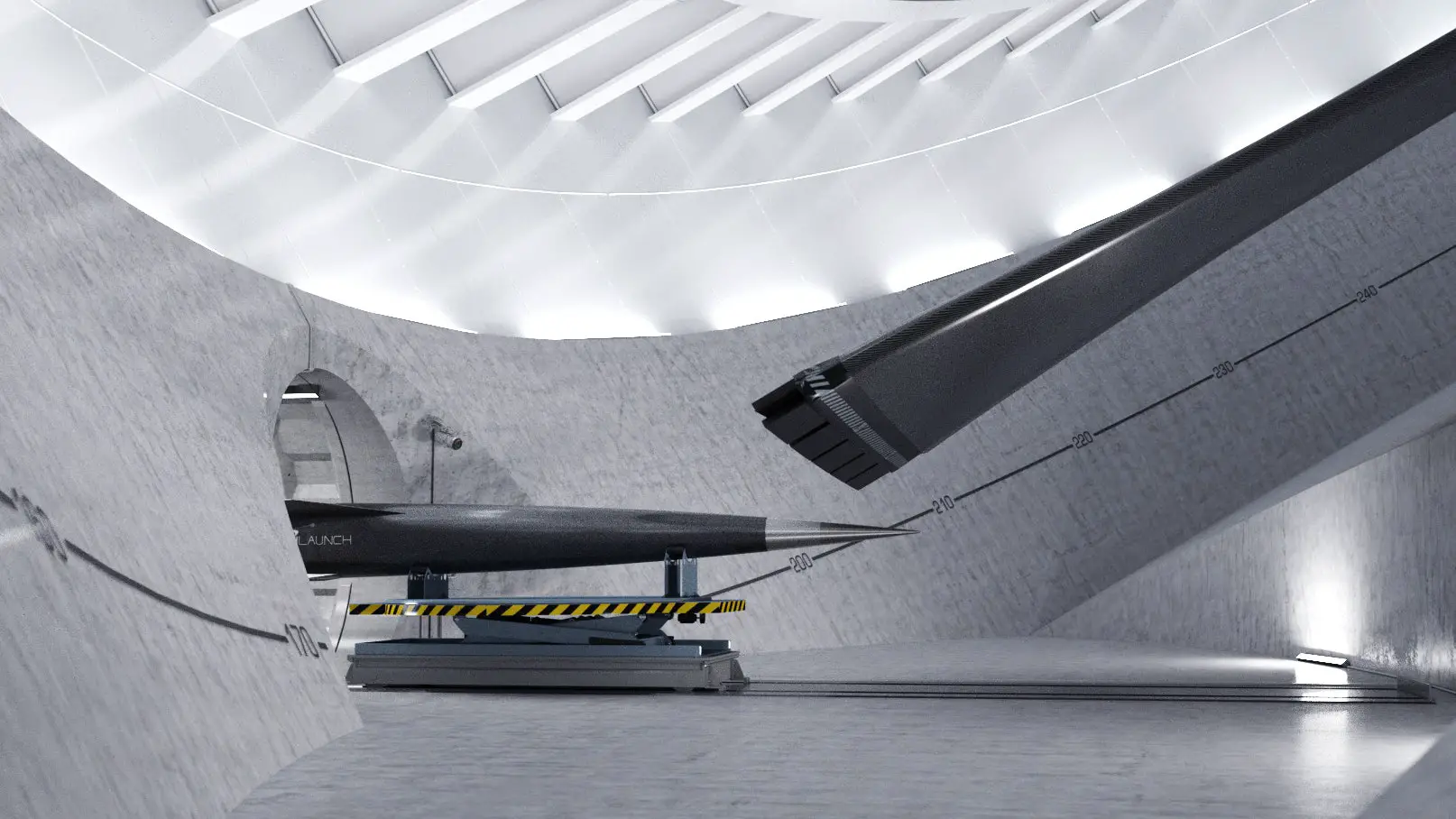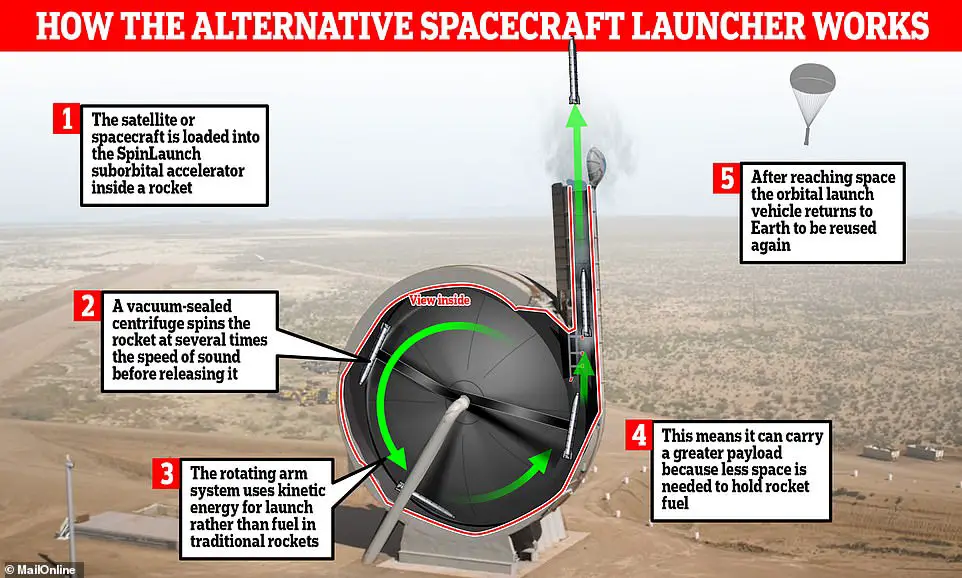Every satellite that has been sent into orbit in the history of spaceflight has required a rocket. The necessity for rockets, however, is changing, with SpinLaunch marking the first successful test launch of its kinetic launch technology. The launch system is zero-emissions and does not need a rocket.
To launch payloads into orbit, it employs a gigantic accelerator the size of the Statue of Liberty that is powered by an electric motor. SpinLaunch claims that their invention may cut fuel usage by a factor of four while costing ten times less than standard rocket launches.
Another significant advantage is that the system would be capable of launching many payloads into orbit each day.
The cargo was not sent into orbit during the test mission. A Suborbital Accelerator with an upright vacuum chamber fashioned like a disc and a carbon fibre tether is the current test apparatus.
The vacuum chamber and the tether work together to spin projectiles at speeds of up to 5000 mph. When the payload has reached full acceleration, the tether is released, launching the projectile out of the launcher, through the atmosphere, and into orbit.
To launch payloads into orbit, a bigger accelerator known as the L100 Orbital Mass Accelerator will be needed. It will function similarly to the smaller suborbital accelerator but will be capable of launching satellites weighing up to 440 pounds into orbit.
Accelerating something to 5000 mph, which is several times the speed of sound, necessitates the use of electronics capable of withstanding 10,000g. However, testing has shown that satellite systems are capable of withstanding such acceleration.
On October 22, SpinLaunch completed its first suborbital launch test. The test was carried out at Spaceport America in New Mexico. The prototype vehicle that was launched during the test flight reached supersonic speeds and was subsequently retrieved to be reused.
Additional flight tests will take place in 2022, using alternative vehicles and launch velocities. SpinLaunch currently expects to launch the first client satellites into orbit in late 2024.

An emissions-free space launch system will be popular as the world strives to become more environmentally friendly. SpinLaunch claims that in the future, it will be able to launch complete constellations of satellites into the atmosphere’s most mission-critical layers.
The corporation also notes that in the future, when vast numbers of people are flying into space, structures, equipment, and supplies will need to be launched.
That comment appears to imply that SpinLaunch envisions a future in which it will be able to launch items heavier than 440 pounds satellites. The launch system’s development began in 2015. SpinLaunch’s accelerator achieved a record for the fastest spinning tip speeds two years after the project began. However, the launch last month was the most significant milestone in the project’s history.
It is uncertain how big the orbital-class accelerator should be. The suborbital accelerator is 50.4 metres tall, and the orbital-class accelerator would definitely be far larger. To put things into perspective, the Statue of Liberty is 46 metres tall. SpinLaunch claims that their suborbital technology will be valuable in the long run as a satellite qualifying facility.


